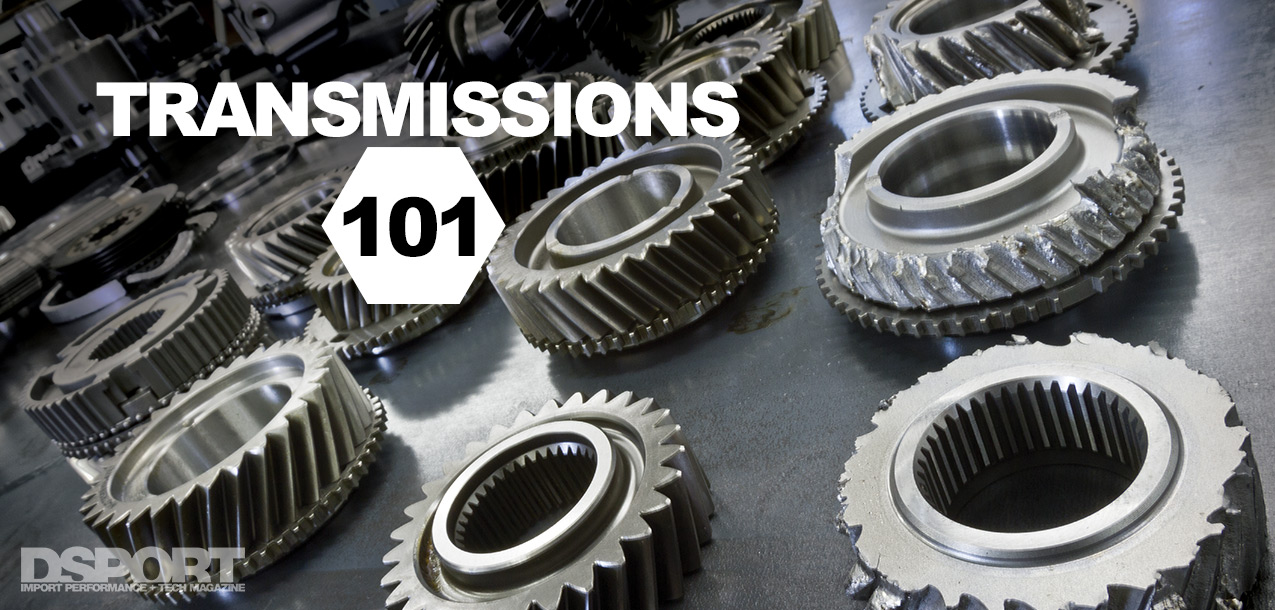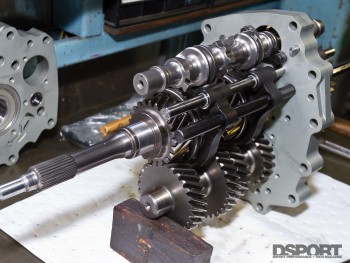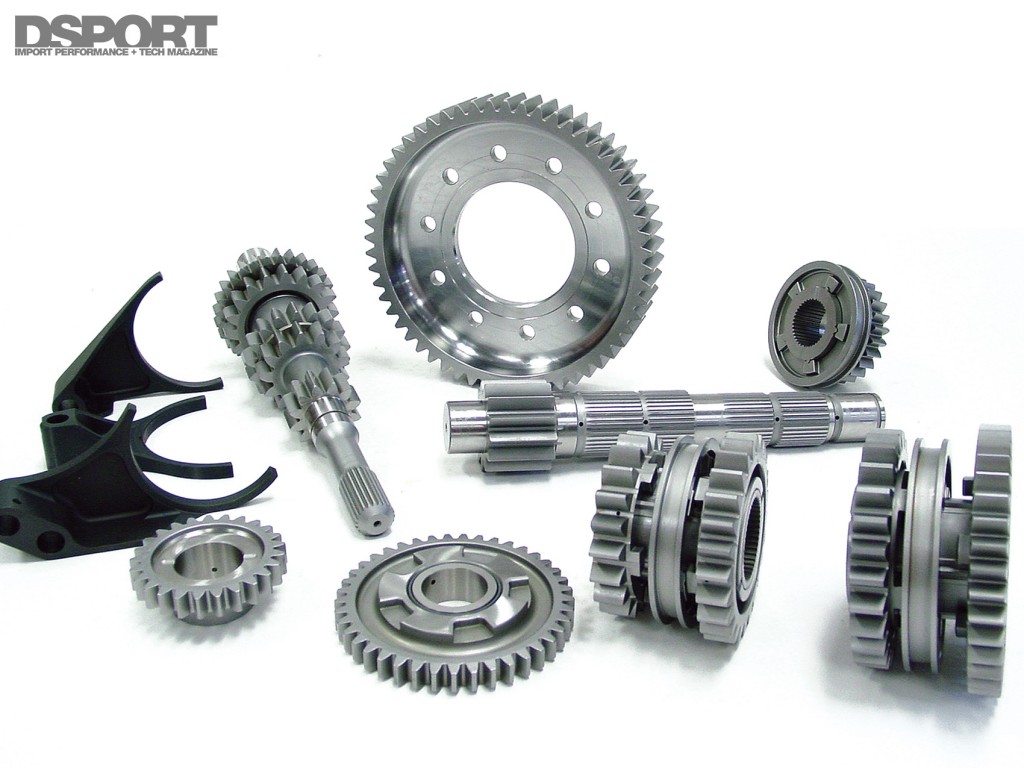Helical or Straight-Cut
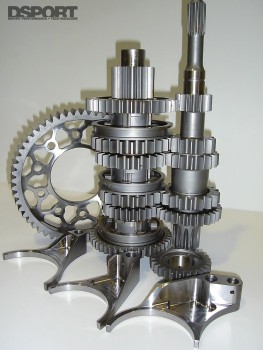 There are two different tooth cuts for transmission gears. OEMs and some aftermarket manufacturers offer helical-cut while straight-cut gears are also an option from the aftermarket for race-only applications. What’s the difference? To begin with, helical gears are quieter because of the gradual application of contact between the gears. Since helical gears feature teeth that mesh at an angle, thrust forces are applied to the bearings that can promote premature wear. With straight-cut gears, the gear teeth are thicker and conceivably more durable. Unfortunately, straight-cut gears are also considerably louder. The high-pitch gear whine associated with straight-cut gears make it impractical for street driving.
There are two different tooth cuts for transmission gears. OEMs and some aftermarket manufacturers offer helical-cut while straight-cut gears are also an option from the aftermarket for race-only applications. What’s the difference? To begin with, helical gears are quieter because of the gradual application of contact between the gears. Since helical gears feature teeth that mesh at an angle, thrust forces are applied to the bearings that can promote premature wear. With straight-cut gears, the gear teeth are thicker and conceivably more durable. Unfortunately, straight-cut gears are also considerably louder. The high-pitch gear whine associated with straight-cut gears make it impractical for street driving.
Synchs and Dogs
Most street transmissions rely on a synchronizer system to implement easy and smooth gear changes. However, intense driving can wear down transmission synchros quickly, especially under the demanding conditions of racing. “Dog engagement” is a more durable means of gear engagement that can be advantageous under racing conditions. However, it is a noisier, “clunk”-type engagement that requires RPM matching for proper down shifts. “Dog boxes” tend to be exceptionally rough and clunky by comparison to synchronizers. On the positive side, when built properly the dogs can last many times longer than synchros under the same abuse. Dog boxes can be up-shifted with or without the clutch in most cases and require only a slight relief of engine load to execute a gear shift. This is possible because dog engagement involves “dogs” or cogs that mate to a slotted collar. The slots are large enough to allow shifts at higher RPMs without full-clutch engagement.
The difference between a dog-engagement gearset with thicker teeth (left) versus a synchro gearset (right).
DCT Transmissions
Having three pedals under foot used to be the sure sign of a performance vehicle, but times have changed. Proponents of the dual clutch transmission (DCT) argue that today’s mechanisms shift quicker than anyone’s left foot and shift arm, and since DCT transmissions are sequential, there is no 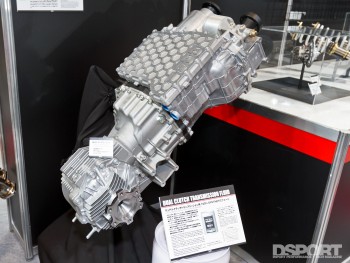 such thing as a misshift. European auto makers like Ferrari and BMW were among the early adopters of this transmission, embracing the technology to the point that some are moving completely away from traditional manual transmissions.
such thing as a misshift. European auto makers like Ferrari and BMW were among the early adopters of this transmission, embracing the technology to the point that some are moving completely away from traditional manual transmissions.
In Japan, Nissan’s GT-R and Mitsubishi’s EVO X were among the first to force the issue of the performance advantage offered by the DCT. In fact, Nissan only offers the GT-R with the GR6 DCT. At first, durability and the ability to transfer big power to the tires came into question, as tuners began exploring the VR38DETT engine. A short time later, the aftermarket’s embrace of the technology and newfound comprehension of how the complex electronics interact between the engine and transmission enabled the R35 to soar to performance levels never thought possible. Is the DCT right for everyone? Most can see the benefit that it offers to the driver and enthusiast, except drifters.
H-Pattern or Sequential
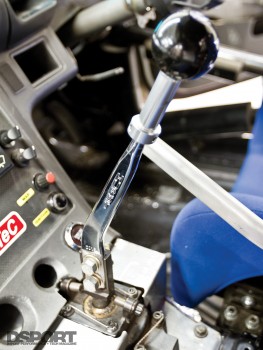 The two primary types of gear-shift mechanisms for manual transmissions are the H-pattern or sequential Pattern shift mechanisms are the most common type found in production vehicles equipped with manual transmissions. Engineered for the masses, this mechanism facilitates easy gear changes and has proven a reliable design for a majority of manual transmission- equipped cars. The H-Pattern also allows the driver to skip to specific gears. An innovation born of racing, the sequential- shifter mechanism enables the driver to implement ultra-fast gear shifts. Since the sequential shifter will only shift in ascending or descending order, there is a reduced possibility of a missed shift. In rare instances, missed shifts can occur if the selector is not properly engaged. When the sequential system is combined with dog engagement, rapid gear shifts can occur.
The two primary types of gear-shift mechanisms for manual transmissions are the H-pattern or sequential Pattern shift mechanisms are the most common type found in production vehicles equipped with manual transmissions. Engineered for the masses, this mechanism facilitates easy gear changes and has proven a reliable design for a majority of manual transmission- equipped cars. The H-Pattern also allows the driver to skip to specific gears. An innovation born of racing, the sequential- shifter mechanism enables the driver to implement ultra-fast gear shifts. Since the sequential shifter will only shift in ascending or descending order, there is a reduced possibility of a missed shift. In rare instances, missed shifts can occur if the selector is not properly engaged. When the sequential system is combined with dog engagement, rapid gear shifts can occur.
Straight cut gears with dog engagement is the absolute strongest and noisiest gearset combination that you can ask for.
Get In Gear
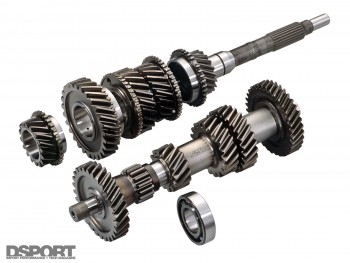 Having a transmission with adequate torque capacity and proper gearing delivers increased performance and reliability. Depending on the torque capacity of the factory transmission, upgraded close-ratio gear sets or some other aftermarket internals may be all that’s needed to make your stock transmission get the job done. When power levels get really serious, aftermarket transmission solutions may be your only choice. In either case, you’ll need to get in gear to get it done.
Having a transmission with adequate torque capacity and proper gearing delivers increased performance and reliability. Depending on the torque capacity of the factory transmission, upgraded close-ratio gear sets or some other aftermarket internals may be all that’s needed to make your stock transmission get the job done. When power levels get really serious, aftermarket transmission solutions may be your only choice. In either case, you’ll need to get in gear to get it done.


